Sensors vs sensibility: Unmanned utilities
A chapter on unmanned technology that can revolutionise the way we view the world.
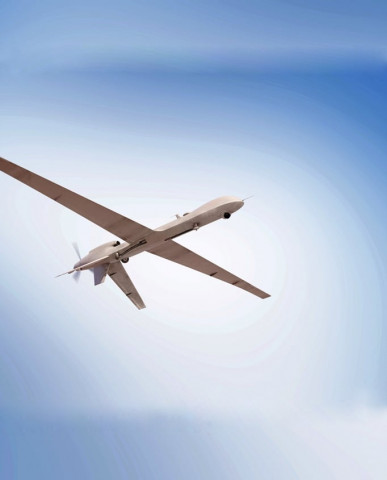
Sensors vs sensibility: Unmanned utilities
“Everything that drops a bomb and doesn’t have a pilot [steering] is called a drone, even if it’s delivering medicines or supplies or books. We need to make a distinction,” says Raja Sabri Khan, elaborating on the general misconception surrounding the technology in Pakistan. The MIT graduate has been involved in innovative product development in the aerospace industry for the past 27 years. “You can’t discard a technology based on that.”
It’s [a]miss
“To make a potentially lethal drone capable of carrying explosives to a certain point, completely unattended, would take a few PhDs in software, avionics and recovery systems,” says Khan. The Predator, an Unmanned Aerial Vehicle (UAV) with strike capabilities, when juxtaposed with Japanese kamikazes, may appear similar but the two are inherently different. “In the case of a fighter aircraft, it is one person taking an instinctive decision within a few seconds. In the case of a drone it is a crew of several people, a government and an operating agency which [instructs it] when to press the trigger,” he clarifies. To therefore alienate the misdirected technology is to accept the supremacy of matter over mind in an unthinking moment.

A showroom for UAVs at Integrated Dynamics displaying a full-size manned aircraft sheltering two smaller unmanned aircraft and a collection of British bikes. PHOTO: ARIF SOOMRO
“The word drone should be erased from our vocabulary, it needs to be unmanned helicopters or unmanned aircraft,” states Khan. Having started out as a model aircraft hobbyist at the age of eight, Khan initiated Pakistan’s first official unmanned aircraft project in 1988 at the Pakistan Space and Upper Atmosphere Research Commission (SUPARCO). And in 1997, after deciding to take his passion to the next level, he set up a small workshop on the roof of his parent’s house and now runs his own company named Integrated Dynamics, supplying unmanned surveillance solutions to the government, R&D organisations and other countries seeking civilian scientific applications of the technology.

The facility is packed with friendly-looking, grey, black and white multicopters displayed neatly in a row with their supporting controls and add-on cameras. Almost life-sized UAVs are stationed on the tile floor while smaller vehicles hang majestically on the walls and several British bikes are parked against the wall behind — all things that Khan is passionate about.the framed certificates and photographs that line the conference room walls are a testimony of his past achievements.

Medium-size multicopters used for aerial filming and photography on display at Integrated Dynamics. PHOTO: ARIF SOOMRO
According to Khan, the word ‘drone’ is a 1920s pseudo name, which originated just before the outbreak of the Second World War when Britain and America were first playing around with large-sized remote-controlled aircraft to simulate an aerial target for air defence gunnery practice. And although the technology has been around for decades, it was introduced in Pakistan in the mid to late ’70s, informs Khan. “The Pakistan Army then was flying remote-controlled model aircraft type aerial target drones imported from the UK.” Having designed early warning drones that can detect hostile activity at the borders, Khan says he now focuses solely on the civilian application of the technology.
UAV — Unsung Assistive Vehicles
“This [UAV] is a very decent alternate to replace people on the ground in hazardous situations,” says Shaheryar Popalzai, a journalist who previously worked for The Express Tribune and a model aircraft hobbyist who assembles the “out-of-the-box solutions” at home. He has been flying quadcopters, fitted with four rotors, for six months and aims to incorporate the technology in his field of work. He even demonstrated its use by using a multicopter fitted with a camera to report on the 2014 famine in Thar and insists that even government agencies can use it to monitor industrial areas for pollution. “Filmmaking, reporting, advertising, in disaster areas... The uses are endless.”

Uzman Jaffrey’s HPI Savage RC Monster Truck. PHOTO: ARIF SOOMRO
Along with disaster reporting, even rescue missions can be facilitated by multicopters. “Water levels could have been monitored by multicopters to give out early warning signals before the 2010 floods in Sindh,” says Uzman Jaffrey, who was part of the rescue team from AMAN Foundation at the time. The Foundation deployed 10 rescue boats with a specially trained Emergency Rescue Team (ERT) from the UK to help out, but without eyes in the air a lot of time was wasted locating survivors who had climbed up trees. “Rescue teams could have easily reduced the response time by accurately locating the victims across a large area without the deployment of rescue helicopters” he says, insisting that along with locating survivors the technology can also be used for fire, traffic and sewerage monitoring and to conduct surveys that can provide invaluable information for numerous projects and research.

Khan exports his UAVs for surveillance and mapping purposes to countries who use them primarily for research. Several countries have been making rounds in the news for their use of UAVs in a mostly conservational capacity: Italy and Spain use them for agricultural mapping and land use monitoring, Australia to watch over marine mammals and coastal patrol, South Korea for Antarctic ozone layer depletion studies and South Africa for anti-poaching activities. Jaffery affirms that Khan’s UAVs are quite popular, adding that Brazil imported them for rainforest mapping.

Raja Sabri Khan conducts a DARE workshop on building robots for student applications at Integrated Dynamics. PHOTO: DARE Facbook page. PHOTO: ARIF SOOMRO
If the technology is used resourcefully it can maximise innovation in the country. “The same module can be applied to a boat, a car or to other machines,” says Khan. He launched the Design Assemble Research Explore (DARE) programme to showcase the technology’s multiple uses and enable students and innovators to learn about it and incorporate it into their area of expertise. Students from the country’s numerous engineering universities attend workshops to back theories with practical learning. “Some of the students from DARE are working on biomedical respirators right now which are basically created using the same air data sensors out of our unmanned aircraft auto piloting systems,” he says.
The technology has the ability to seamlessly integrate into everyday life. For one of DARE’s future projects, Khan enthuses designing a UAV that will change the fate of education in inaccessible areas. “A classroom with audio visual connectivity will be able to uplink a signal to the drone circling overhead and this can then be relayed out to schools with receivers and TV screens several hundred kilometres away without the need of direct human intervention,” he says, explaining that the makeshift unmanned aircraft platform, acting as a mobile phone ‘tower in the sky’ will be fitted with solar cells on its wings providing propulsive energy to an electric motor driving a propeller. Alongside DARE, Khan has also initiated a project on aerial photography and videos under the name of Pegasus Films that has used multicopters for the purpose of documenting several heritage sites in Pakistan.

A mini ground control station for receiving live videos from multicopters at Integrated Dynamics. PHOTO: ARIF SOOMRO
Target market
Many hobby shops in the country are now readily supplying easy-to-assemble model aircraft and other smaller unmanned systems. Hobby Lobby in Karachi, a sanctuary for hobbyists since 1975, is stocked with all the technical paraphernelia. “It’s a very expensive but safe hobby,” confirms Jaffery, standing beside his highly modified hobby truck at the store. He developed the hobby during the early ’80s in Turkey when everyone was pursuing it, adding that he uses his remote control truck for dune bashing and in races with friends.
At the Model Aeronautical Society of Karachi (MASK) founded in 1980, enthusiasts enjoy regular flight sessions under full approval from the Air Force and the Civil Aviation Authority, informs Khan. Due to security threats they are only allowed to fly on weekends now. Khan is also a member of the club and flies his model aircraft there. “Nobody is flying drones here which means you are not flying out 5kms or 50kms away from the airfield,” he says. “Hobbyists are flying an aircraft which basically operates in a 200 metre radius and less than 50 metres in altitude.” In order to control a model aircraft, one requires constant visual contact as they are not fitted with an auto piloting system. “You can’t even convert a model airplane into a drone,” he says.
With hobbyists on the rise, business is flourishing for most model aircraft manufacturers. “Ready-to-fly options can range from Rs15,000 to Rs135,000, excluding a camera,” says Popalzai, adding that the right sellers are those who can even modify and repair them. “If you want to carry heavier cameras you will need to invest in ones that can handle larger weight, and these ones cost the most.” For instance, a hexacopter and an octocopter, with six and eight rotors respectively, are more ‘heavy lift’ copters.

An image taken by a multicopter showcasing the potential for aerial photography in Pakistan. PHOTO: ARIF SOOMRO
With the fear of being labelled as ‘drone sellers’ imbedded deep in the minds of shopkeepers, only hobbyists come forward to share their side of the story. “These shops sell model aircraft, not drones,” says Khan, adding that he builds everything himself which includes UAVs fitted with highly modified cameras, data links and sensor elements, allowing a wider visual range and cost around $100,000 to $200,000, or more per system. “We would make a lot more money if they [importing countries] were buying expendable aerial targets [since] the civilian unmanned systems are generally built to last a few years,” he says, adding that a simple environmental drone costs under $2,000.
The potential for the technology to be an income generator in several sectors has increasingly come into the limelight. “According to a forecast, around $80 billion to $90 billion is projected for the civilian applications drone industry sales over the next decade,” says Khan.
Technology trap
Armed and civilian UAVs are worlds apart in terms of application and technology. According to Khan, while Pakistan doesn’t yet possess the colossal infrastructure required to manufacture armed UAVs, it can easily produce smaller, model aircraft-sized UAVs for surveillance that require less time and resources.
Model aircraft are stage one, drones are stage two and full-sized aircraft are stage three, informs Khan. “The technology will allow them [developing countries] to create an aerospace sector,” he says, adding, “The basic skills involved in making a UAV are a great training ground for the structures that you could use later on at different levels in a full-size unmanned aircraft.”
But this doesn’t mean that all who can assemble and fly a model aircraft can also make a UAV and pose a threat to security. “Model aircraft won’t teach you about the avionics, auto-piloting systems or the data links required for the operation of a UAV,” Khan says. Operating the latter would require extensive training.
Future flying
As awareness and use grows, regulations are bound to eventually catch up with the use of UAVs in the country. The US and Australia are already at the forefront of devising a regulatory framework. Even in the UK strict regulations need to be followed, informs Popalzai, adding that people need to acquire licenses to fly their copters.
In an independent incident in Punjab where a quadcopter flew into one of the minarets at Faisal Mosque in Islamabad, the government made an instant decision to ban quadcopter flying in the province, says Khan, hoping that any future regulations introduced in the country will be based on sensible recommendations. “Vacuum cleaners are noisy but we put up with them because they are of some use — noise aside. I think the same applies for aircraft, manned or unmanned,” he says.
The misconceptions about the technology are traced by many to the negative portrayal by the media. “Unlike other dual-use technologies, drones are not designed solely for lethal applications but, unfortunately, they have only been used and highlighted for this in our part of the world,” remarks Khan.
Dilaira Mondegarian is a subeditor on The Express Tribune magazine desk. She tweets @DilairaM
Published in The Express Tribune, Sunday Magazine, May 11th, 2014.

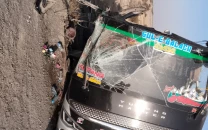

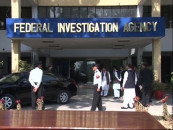
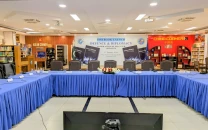
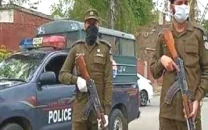
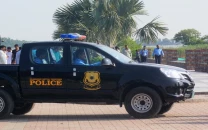












COMMENTS
Comments are moderated and generally will be posted if they are on-topic and not abusive.
For more information, please see our Comments FAQ